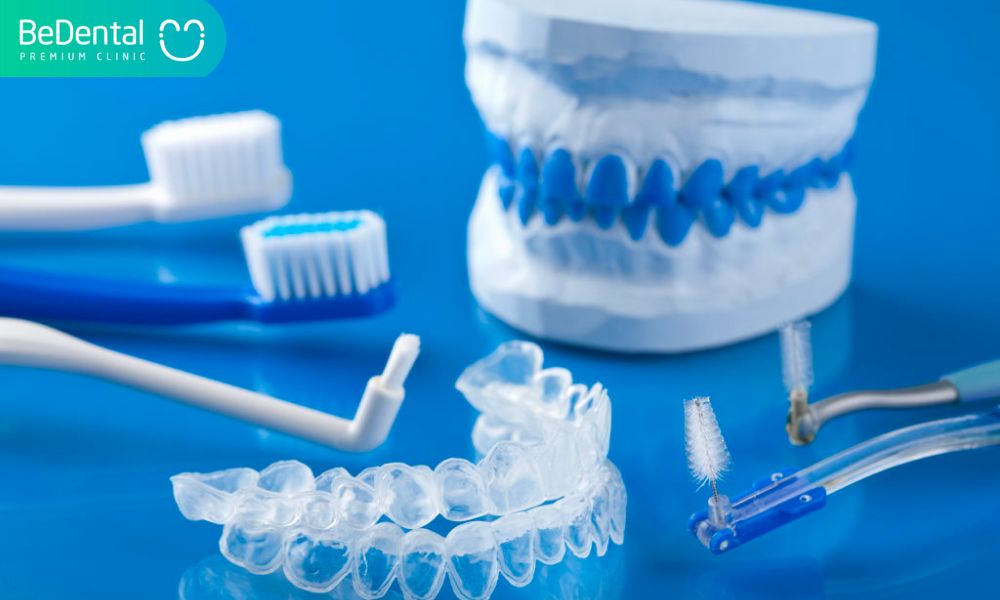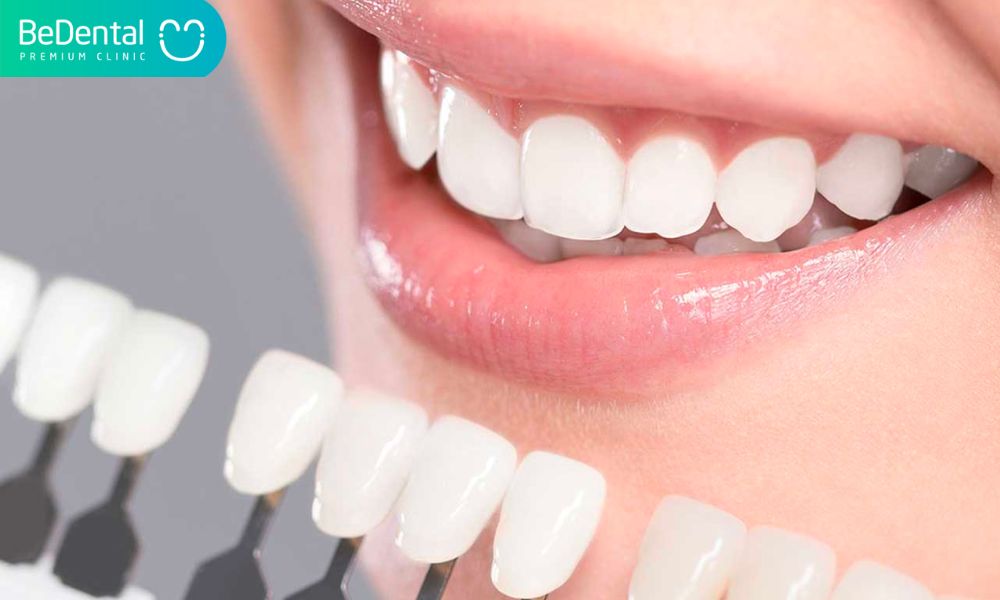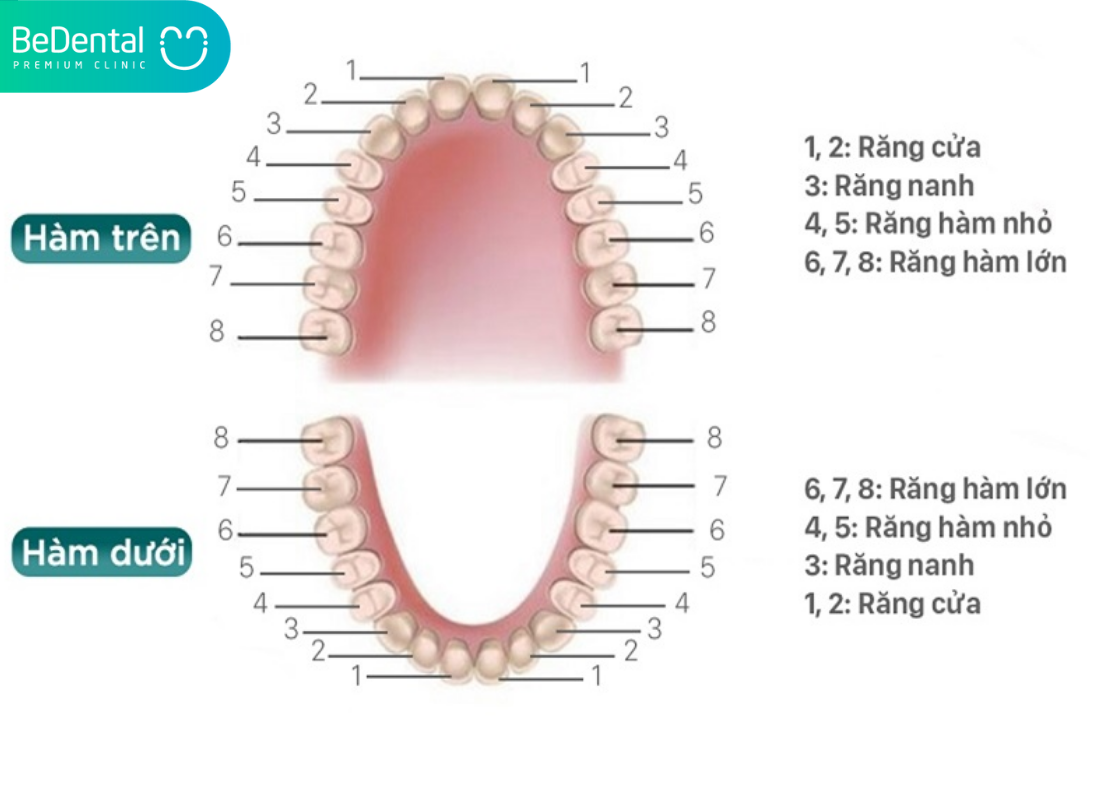Professional At-home Teeth Whitening Kits
Professional at-home teeth whitening kits are prescribed by your dentist and contain a high concentration of either hydrogen peroxide or carbamide peroxide. They are more expensive than retail-ready whitening kits, but more affordable than in-office procedures.
Custom teeth whitening trays are designed to hold the whitening solution on your teeth and prevent exposure of the solution to the sensitive gum area. Professional at-home teeth whitening kits are simple to apply and have obvious results after just one to two weeks of treatment.

How At-Home Teeth-Whitening Kits Work
At-home teeth-whitening kits are designed to help users achieve a brighter and whiter smile from the comfort of their own homes. These kits typically include whitening gels, trays, or strips that contain a bleaching agent, usually hydrogen peroxide or carbamide peroxide. The active ingredients in these gels or strips penetrate the enamel surface of the teeth and break down stains or discoloration.
The bleaching agents work by oxidizing the molecules that cause the staining, resulting in a lighter shade for the teeth. The trays or strips are typically worn for a specific amount of time each day, allowing the bleaching agents to work on the teeth. Over a period of consistent use, usually spanning several days to a few weeks, users can see noticeable improvements in the whiteness of their teeth.
It is important to follow the instructions provided with the kit and not exceed the recommended usage time to avoid potential side effects or damage to the teeth and gums.
At-Home Whitening Procedure
Professional at-home whitening kits aren’t available without a prescription. Custom-fitted dental trays are needed to make sure the whitening solution is in place. Without them, a lot of the solution can be distributed or applied to sensitive parts of the mouth that may develop dental disease.
There are some steps to bleach your teeth at home:
The dental putty used to create an impression of your teeth will be mainly replaced by a digital scan of your upper and lower teeth.
Custom trays will be manufactured either at-house or in a dental lab. The turnaround time takes a few days up to two weeks depending on where the trays are made.

While the whitening trays are being prepared, the dentist will note the natural color of your teeth on the dental chart for comparison.
Once the trays are done, an appointment will be made to instruct you to apply and dispense the solution correctly and other information to get the best results.
You need to brush, floss and rinse thoroughly your teeth before using professional at-home teeth whitening kits.
The procedure is usually carried out for an hour per day in 2 weeks, and several brands can be worn overnight. You would stay away from eating, drinking, or smoking while wearing the trays and 30 minutes after removing the trays.
After two weeks of at-home teeth whitening treatment, a check-up will be set up to track your outcomes and compare them to your reference color.
If you need more whitening, the bleaching solution can be used for touch-ups.
Factors to Consider When Choosing an At-Home Teeth-Whitening Kit
When choosing an at-home teeth-whitening kit, there are several factors to consider to ensure you select the right one for your needs. Here are some important factors to keep in mind:
- Whitening effectiveness: Look for kits that have proven whitening results. Check for the percentage of the active whitening ingredient, such as hydrogen peroxide or carbamide peroxide. Higher concentrations generally yield more significant whitening results.
- Safety and comfort: Consider the safety of the product and how it will affect your teeth and gums. Look for kits that have been clinically tested and approved by dental professionals. Additionally, consider the potential for tooth sensitivity and gum irritation. Some kits include desensitizing agents or offer options for sensitive teeth.
- Application method: Different kits utilize various application methods, such as whitening gels, strips, trays, or pens. Choose a method that is convenient for you and fits your lifestyle. For example, whitening strips may be easier to apply but might not reach all areas of the teeth as effectively as trays or gels.
- Duration and frequency: Consider the recommended duration and frequency of use. Some kits require daily use for a specific period, while others may offer quicker results with less frequent use. Choose a kit that aligns with your time commitment and desired timeline for achieving results.
- Reviews and reputation: Read reviews and consider the reputation of the brand or product. Look for feedback from other users to get an idea of their experiences and satisfaction with the product.
- Price: Consider your budget when selecting a kit. Prices can vary widely, so compare the cost of different kits and assess the value you are getting for the price.
- Professional consultation: If you have any pre-existing dental conditions or concerns, it’s advisable to consult with your dentist before using an at-home teeth-whitening kit. They can provide personalized recommendations and ensure that the chosen kit is suitable for your oral health.
By considering these factors, you can make an informed decision when choosing an at-home teeth-whitening kit that suits your needs, preferences, and budget while ensuring safety and effectiveness.
Potential Side Effects of At-Home Teeth-Whitening Kits
While at-home teeth-whitening kits can be effective in brightening your smile, it’s important to be aware of potential side effects. Some common side effects of using these kits include tooth sensitivity and gum irritation. The bleaching agents used in the kits can temporarily make your teeth more sensitive to hot or cold temperatures. This sensitivity usually subsides after the treatment is completed, but it’s important to use a toothpaste for sensitive teeth and avoid consuming very hot or cold foods during the whitening process.
Gum irritation can also occur if the whitening gel or strips come into contact with the gums. This can lead to redness, soreness, or even mild inflammation. To minimize this risk, it’s crucial to follow the instructions carefully and apply the whitening product only to the teeth, avoiding direct contact with the gums.
In rare cases, some individuals may experience allergic reactions to the ingredients in the whitening products. If you notice any unusual or severe reactions, such as swelling, difficulty breathing, or severe discomfort, it’s important to discontinue use immediately and seek professional dental advice.
It’s worth noting that overusing at-home teeth-whitening kits or using them improperly can result in uneven whitening or damage to the tooth enamel. It’s always recommended to consult with your dentist before starting any teeth-whitening treatment, as they can provide guidance on the most suitable options for your specific dental needs and ensure that the process is safe and effective.
Overall, when used correctly and with caution, at-home teeth-whitening kits can provide noticeable results. However, it’s important to be aware of the potential side effects and to prioritize your oral health throughout the whitening process.
Safety Precautions for At-Home Teeth-Whitening Kits
While at-home teeth-whitening kits can be an effective way to brighten your smile, it’s essential to follow safety precautions to protect your oral health. Here are some safety precautions to consider when using at-home teeth-whitening kits:
- Read and follow the instructions: Carefully read the instructions provided with the kit and follow them precisely. Pay attention to recommended application times, duration of use, and any additional guidelines.
- Stick to the recommended dosage: Overusing or exceeding the recommended dosage of the whitening agent can lead to tooth sensitivity, gum irritation, or other adverse effects. Use the whitening gel or strips as directed and avoid excessive application.
- Protect your gums and lips: Make sure to apply the whitening agent only to your teeth and avoid contact with your gums and lips. Excessive exposure to the whitening gel or strips can cause gum irritation or chemical burns.
- Avoid swallowing the whitening agent: Spit out any excess whitening gel or rinse your mouth thoroughly after use. Swallowing the whitening agent can cause stomach discomfort and other digestive issues.
- Check for sensitivity: If you have a history of tooth sensitivity, it’s essential to be cautious when using at-home whitening kits. Start with shorter application times and gradually increase if tolerated. If you experience significant sensitivity or discomfort, discontinue use and consult your dentist.
- Maintain oral hygiene: Continue practicing good oral hygiene habits, such as brushing and flossing regularly, while using the at-home whitening kit. This will help remove any residue and maintain overall oral health.
- Consult your dentist: If you have any underlying dental conditions, such as tooth decay, gum disease, or dental restorations, it’s advisable to consult with your dentist before using an at-home teeth-whitening kit. They can evaluate your oral health and provide personalized guidance.
Remember, while at-home teeth-whitening kits can produce noticeable results, it’s important to use them responsibly and in moderation to prevent potential risks. If you experience any adverse effects or concerns, discontinue use and seek advice from your dentist.
Other At-Home Teeth Bleaching Options
The most popular options for at-home teeth whitening include:
- Tooth whitening strips and gels. Applied directly to the teeth with a brush or a thin strip, these products need to be applied once or twice daily within 10 to 14 days. Results last at least four months.
- Tray-based teeth bleaching systems. In order to whiten teeth with this method, a mouth guard-like tray is filled with a bleaching paste or gel that contains peroxide and is applied to the teeth for one to several hours each day for up to four weeks. You can buy tray-based teeth whitening systems at drugstores or have one custom-fitted by your dentist.
- Tooth whitening toothpastes. Every toothpaste aids in removing stains from teeth since they are moderately abrasive. However, whitening toothpastes also include chemicals or polishing agents that work without the use of a bleaching agent to help remove stains from teeth. Some whitening toothpastes contain peroxides, but they don’t stay on the teeth long enough to whiten the teeth.
Professional In-Office Teeth Whitening
If at-home teeth whitening is not your best choice, you can always opt for professional in-office whitening. Although this procedure is more expensive than at-home teeth whitening , its outcome is more trustworthy. In addition, you need to visit the dentist more than once, which takes a lot of time.
However, professional in-office whitening produces the best results in a relatively short period of time. The process is really straightforward:
Your teeth will be polished to eliminate any plaque before we begin.
After that, gauze will be used to isolate your mouth, and a barrier will be positioned along your gum line to shield it from the solution.
Only the front surface of your teeth will be treated with a whitening solution.
Some whitening products include curing light or laser time to activate the peroxide. Depending on the manufacturer, the solution may be kept on for 30 to 60 minutes or reapplied usually for up to an hour.
The teeth are washed when the reference shade has been achieved (or after the maximum time). A fluoride application may be used to help ease any discomfort.
You can have more visits until you’re satisfied with your shade. Your eating and drinking habits will determine how often you need touch-ups. Regular coffee and tea consumption, for example, can discolor teeth quickly.

Keeping Teeth White
You may help preserve the effects by brushing, flossing, and rinsing your teeth every day whether you use an at-home teeth whitening method or have your teeth bleached by a dentist. Additionally, stay away from acidic and tannic foods and beverages, such as:
- Caffeine and sports drinks
- White and red wine
- Sparkle beverages
- Berries and other strongly-colored foods
- Sauces (soy, tomato, curries, etc)
More
Tartar and 6 ways to prevent its return
Tooth decay and 11 risk factors
In-Office Teeth Whitening and 5 Steps To A Bright Smile
Porcelain Veneers and 3 factors influence the price of Porcelain Veneers






Pingback: Over-the-counter teeth whitening and 7 common questions – Be Dental
Pingback: Teeth bleaching: 4 ways to bleach teeth – Be Dental
Pingback: Best Dental Clinics Near Me in Hanoi | Nha Khoa Bedental
Pingback: Bleeding gums: 10 ways to handle at home that you should know | Nha Khoa Bedental
Pingback: Coffee In Moderation and Its Dental Effects – Be Dental